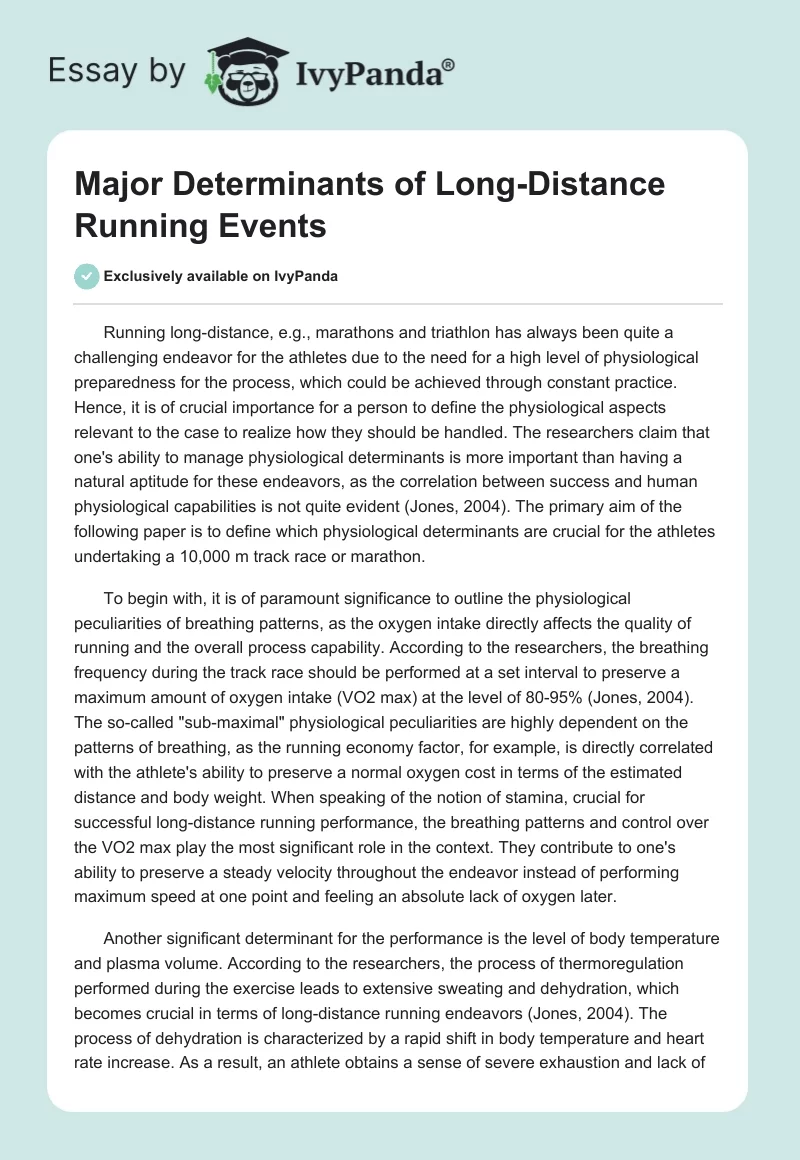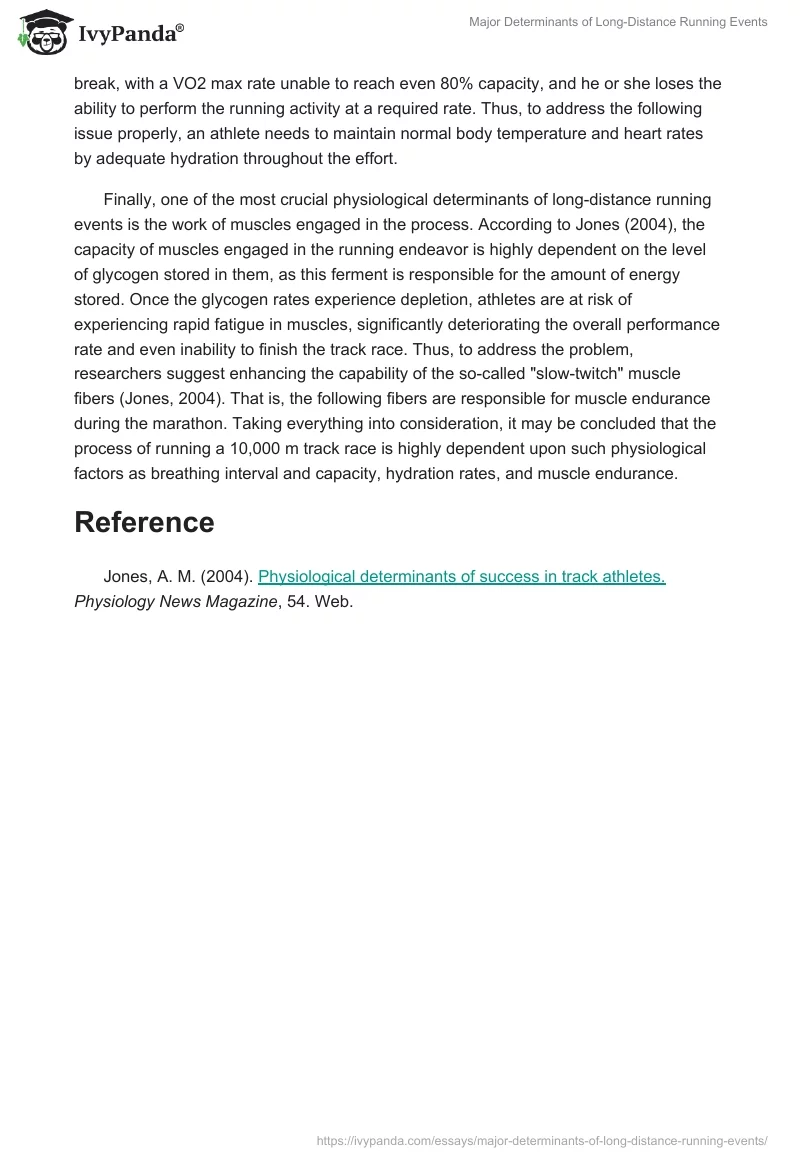Running long-distance, e.g., marathons and triathlon has always been quite a challenging endeavor for the athletes due to the need for a high level of physiological preparedness for the process, which could be achieved through constant practice. Hence, it is of crucial importance for a person to define the physiological aspects relevant to the case to realize how they should be handled. The researchers claim that one’s ability to manage physiological determinants is more important than having a natural aptitude for these endeavors, as the correlation between success and human physiological capabilities is not quite evident (Jones, 2004). The primary aim of the following paper is to define which physiological determinants are crucial for the athletes undertaking a 10,000 m track race or marathon.
To begin with, it is of paramount significance to outline the physiological peculiarities of breathing patterns, as the oxygen intake directly affects the quality of running and the overall process capability. According to the researchers, the breathing frequency during the track race should be performed at a set interval to preserve a maximum amount of oxygen intake (VO2 max) at the level of 80-95% (Jones, 2004). The so-called “sub-maximal” physiological peculiarities are highly dependent on the patterns of breathing, as the running economy factor, for example, is directly correlated with the athlete’s ability to preserve a normal oxygen cost in terms of the estimated distance and body weight. When speaking of the notion of stamina, crucial for successful long-distance running performance, the breathing patterns and control over the VO2 max play the most significant role in the context. They contribute to one’s ability to preserve a steady velocity throughout the endeavor instead of performing maximum speed at one point and feeling an absolute lack of oxygen later.
Another significant determinant for the performance is the level of body temperature and plasma volume. According to the researchers, the process of thermoregulation performed during the exercise leads to extensive sweating and dehydration, which becomes crucial in terms of long-distance running endeavors (Jones, 2004). The process of dehydration is characterized by a rapid shift in body temperature and heart rate increase. As a result, an athlete obtains a sense of severe exhaustion and lack of break, with a VO2 max rate unable to reach even 80% capacity, and he or she loses the ability to perform the running activity at a required rate. Thus, to address the following issue properly, an athlete needs to maintain normal body temperature and heart rates by adequate hydration throughout the effort.
Finally, one of the most crucial physiological determinants of long-distance running events is the work of muscles engaged in the process. According to Jones (2004), the capacity of muscles engaged in the running endeavor is highly dependent on the level of glycogen stored in them, as this ferment is responsible for the amount of energy stored. Once the glycogen rates experience depletion, athletes are at risk of experiencing rapid fatigue in muscles, significantly deteriorating the overall performance rate and even inability to finish the track race. Thus, to address the problem, researchers suggest enhancing the capability of the so-called “slow-twitch” muscle fibers (Jones, 2004). That is, the following fibers are responsible for muscle endurance during the marathon. Taking everything into consideration, it may be concluded that the process of running a 10,000 m track race is highly dependent upon such physiological factors as breathing interval and capacity, hydration rates, and muscle endurance.
Reference
Jones, A. M. (2004). Physiological determinants of success in track athletes.Physiology News Magazine, 54. Web.


